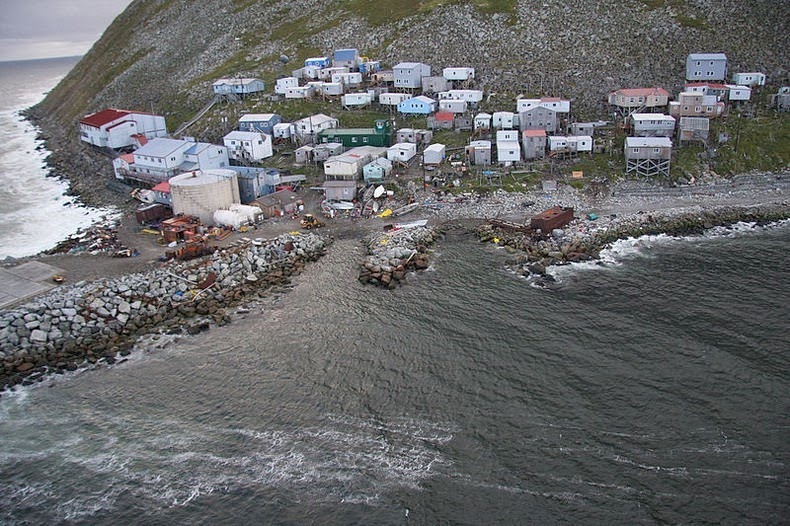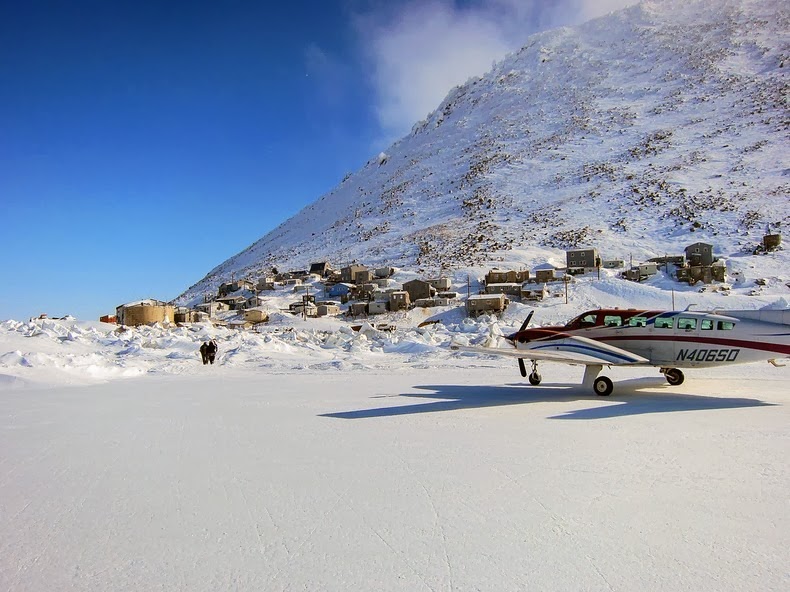Diomede (Inalik) village on the west coast of Little Diomede Island, Alaska.
Photo credit
The native village of Little Diomede island.
Photo credit
Photo credit
Photo credit
The islands were originally inhabited by Yupik Eskimos as long as 3,000 years ago. The first European to reach the islands was the Russian explorer Semyon Dezhnyov in 1648. Eighty years later, it was re-discovered by the Danish navigator Vitus Bering on August 16, 1728, the day on which the Russian Orthodox Church celebrates the memory of the martyr St. Diomede.
When the United States purchased Alaska from Russia in 1867, it included the Little Diomede. The new boundary was drawn between the two Diomede Islands and the Big Diomede was left to Russia.
While Little Diomede developed into a small community of about 75 individuals, with a church and school, Big Diomede became a Russian military base. After World War II the native population was driven off the island to avoid contacts across the border, and any Little Diomede inhabitants who strayed across the waters too close to Big Diomede where taken captive by the Russians. Today it has no permanent population but it is the site of a Russian weather station and a base of Russian Border guard troops
Little Diomede Eskimos live a subsistence lifestyle, harvesting fish and crab, hunting beluga whales, walrus, seals and polar bears. Most supplies come from an annual barge delivery from the mainland from stores like Wal-Mart. A few residents work for the local government or school. There has been some commercial fishing and mining on the island, but both industries are in decline.
Can you imagine a worse place to live ever!!














